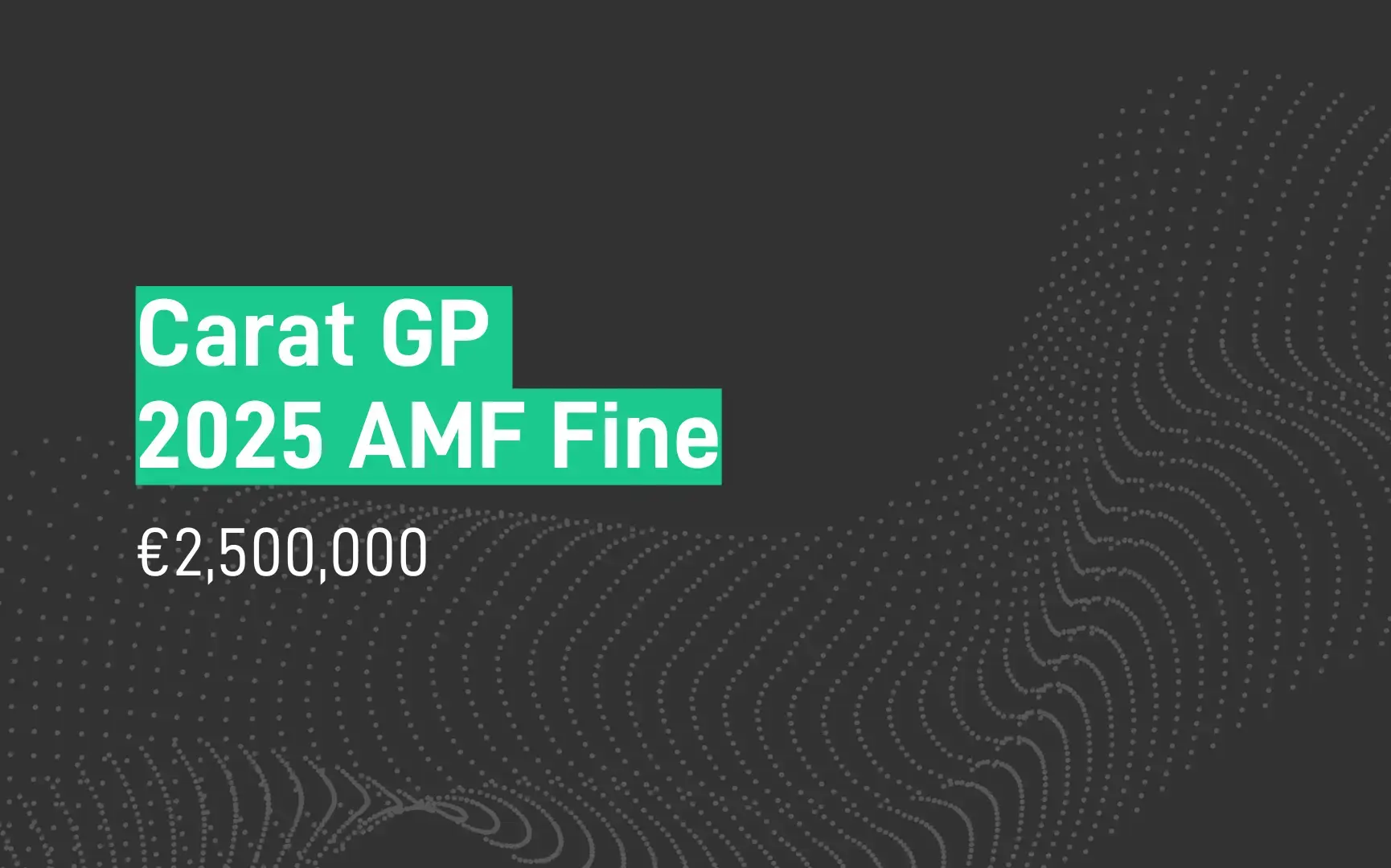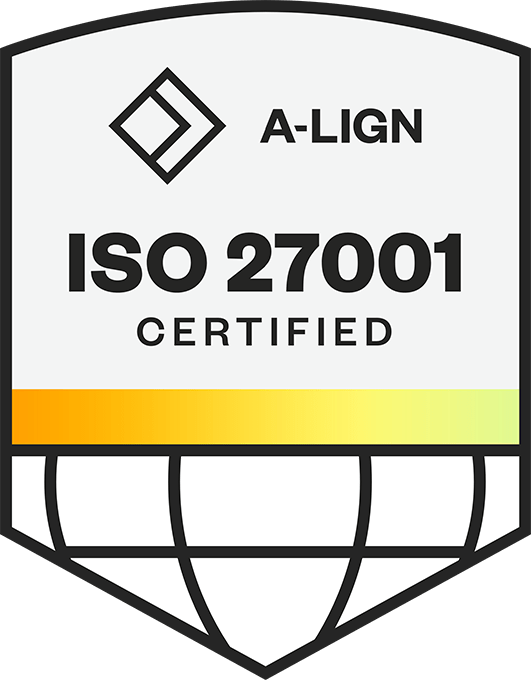The Markets in Financial Instruments Regulation (MiFIR) requires investment firms to report transactions in financial instruments to regulators (under Article 26 of MiFIR) as a key tool for market abuse surveillance. In 2018, the MiFIR transaction reporting regime came into effect across the EU (and was mirrored in UK law prior to Brexit).
Now, updates are on the horizon in both jurisdictions.
In this blog, we detail the upcoming changes to reportable fields, highlight differences between the EU and UK approaches, outline the timeline of key milestones through 2024-2025, and discuss impacts on various types of firms subject to transaction reporting obligations.
This is the third and final installment of our blog series exploring the upcoming changes to MiFIR transaction reporting in the EU and UK. We encourage you to check out part one and part two of this blog for a full breakdown of all the relevant updates.
Take this blog on the go... listen here.
Contents
EU Perspective vs UK Perspective

EU Perspective
-
The European Union’s reforms are driven by legislative amendments in the MiFIR Review, which entered into force on 28 March 2024 (although the law is in force, firms are not required to change their reporting on that date).
-
The European Securities and Markets Authority (ESMA) is now tasked with implementing detailed changes via revised technical standards. The aim is to enhance both the quality and scope of data reported, addressing gaps identified since MiFIR’s original launch in 2018.
-
Among other updates, the introduction of new data fields - designed to improve detail and align with other regulations - will expand the scope of reportable derivative trades. According to ESMA
-
These reforms constitute the most significant overhaul of EU transaction reporting since MiFID II’s introduction.
UK Perspective
-
Meanwhile, the UK - having retained the MiFIR framework in its own law - is charting a different course.
-
The Financial Conduct Authority (FCA) and HM Treasury launched a review of the UK’s transaction reporting regime in late 2024, aiming to improve data usefulness for regulators and reduce unnecessary burdens on firms.
-
In Discussion Paper DP24/2 (November 2024), the FCA sought industry feedback on ways to simplify the regime.
-
Notably, HM Treasury has signalled it will allow further divergence from the EU model, granting the FCA flexibility to adopt UK-specific rules rather than mirror ESMA’s changes.
Proposed Changes in the EU MiFIR Transaction Reporting Regime
ESMA is expanding and refining the data that EU-regulated firms must submit.
Firms will need to include new fields such as “Transaction Effective Date,” “Chain” identifiers for linked trades, and digital token references - to capture emerging products and clarify reporting flows.
Meanwhile, the “No LEI, No Trade” rule will tighten client ID requirements, and certain OTC derivatives in major currencies must be reported even if not traded on-venue.
Other changes will align reporting fields with EMIR and SFTR (e.g., Buyer/Seller indicator for derivatives, price and notional fields), and the short-selling flag will be removed.
Key Changes to Reportable Fields in the EU

New Data Fields
Several new fields will be added to transaction reports to capture details not previously reported:
1. Transaction Effective Date
-
Firms must report the date on which the obligations of the trade become effective.
-
For a debt instrument, this is the intended settlement date; for a derivative, it is the date the contract takes effect (forward start date if applicable).
-
If no specific effective date is in the contract, the trade execution timestamp is used by default.
2. Entity Responsible for Reporting
-
A field to identify the entity subject to the reporting obligation, in cases where the executing firm and the obligated firm differ (e.g., a firm reporting on behalf of a client firm).
-
This provides transparency when one firm submits the report for another.
3.Unique Transaction Identifiers
-
Trading Venue Transaction ID Code (TVTIC)
-
Already used for on-venue trades.
-
ESMA proposes extending the reporting of such codes (non-EEA TV TIC, Off-Venue TIC) and developing generation methodology via L3 guidance for trades executed outside the EU so both sides of a transaction can be matched.
-
For off-venue trades (XOFF), a mechanism will be introduced for the two counterparties to generate and share a common transaction ID.
-
Aggregated Order ID (INTC Identifier)
-
A new identifier to link an execution that results from aggregating multiple client orders.
-
The executing broker will generate an “INTC” code to report, allowing regulators to connect the market-side trade to the subsequent allocations to clients.
- The enhanced linkability could significantly improve regulatory surveillance capabilities for complex order flows or market abuse investigations.
-
“Chain” Transaction Identifier
-
A unique code to link all transaction reports that are part of the same transaction chain (e.g., transmitted through multiple brokers).
-
The proposal would oblige the firm at the start of the chain (executing firm) to generate a unique chain ID and pass it along to each subsequent party, ensuring all related reports can be associated.
-
This facilitates reconstruction of the full execution path when an order passes through several firms.
4. Digital Token Identifier
-
To accommodate trades in tokenised securities or other DLT-based instruments, ESMA will introduce fields to report the ISO 24165 Digital Token Identifier (DTI) where relevant.
-
This applies to financial instruments issued natively on distributed ledger technology or in tokenised form, in line with the EU’s Markets in Crypto-Assets (MiCA) framework.


Modified Fields and Alignments with Other Regimes
Many existing fields will see adjustments to their definitions or permissible values, often to align with EMIR Refit and international standards:
1. Buyer/Seller Indicator
-
The current RTS 22 method for identifying buyer/seller is problematic for some derivatives like swaps.
-
ESMA has proposed to align with the EMIR Refit approach for certain instruments, which involves identifying the payer/receiver for each leg of the transaction instead of a single buyer/seller for the whole trade.
- This would require adding new fields for Payer/Receiver identification codes for each leg, but would avoid current workarounds.
-
The change ensures firms report the direction of derivatives uniformly.
2. Price and Notional Fields
-
Definitions of price-related fields will be clarified.
-
Complex trades and package transactions will be handled with clearer rules:
-
Example: A “package transaction price” field is proposed as an additional field to report the price of a package deal (aligning with EMIR’s package reporting).
-
Notional currency and price currency fields will also align with common data element standards used in EMIR/SFTR, for example:
-
Potentially adding a dedicated 'Option Premium Amount' field.
-
Clarifying that price for CDS, IRS, FRAs, and commodity basis swaps is reflected in rate/spread fields, making Field 33 'NOAP.'
3. Underlying Instrument Identification
-
For derivatives on an index, the single field “underlying index name” will be split into two fields – an indicator specifying if it’s a benchmark and the name of the index – to better categorise different index types.
-
Ties into benchmark regulation references, ensuring indices used as underlyings are reported in a standardised way.
4. Client and Order Handling Fields
-
A new field for “client category” (e.g., retail/professional) has been discussed to help regulators understand the nature of clients behind transactions.
-
ESMA also proposes a field capturing a “validity timestamp” for actions (to record corrections or cancellations).
-
The “execution within firm” indicator and “transmission of order” flags will be updated to cover more scenarios (e.g., allowing a firm trading on own account to flag transmitted orders).


Removed Fields
ESMA identified at least one field to be dropped entirely due to limited utility:
-
The Short Selling Indicator (flagging if a trade is a short sell) will be removed from MiFIR transaction reports. This information is considered duplicative since short positions are separately reported under the Short Selling Regulation.
-
Eliminating this field reduces complexity without harming regulatory data, per ESMA’s analysis.
Scope of Reportability Changes
The universe of reportable transactions will grow in the EU. Under the MiFIR Review, certain OTC derivative contracts become reportable even if not traded on a venue. For example:
-
Article 8a(2) of revised MiFIR brings into scope OTC derivatives in the major currencies (EUR, USD, JPY, GBP) that meet specific criteria (e.g., standardised interest rate swaps that are centrally cleared or certain credit default swaps on systemic bank indices).
-
These products must be reported regardless of trading venue.
-
Other OTC derivatives (not in that list) remain subject to the “traded on a trading venue” (TOTV) principle.
At the same time, there are modest proposals to reduce reporting requirements in the below circumstances:
-
Disposals in Liquidation/Bankruptcy/Insolvency: Proposing to exempt disposals or sales of financial instruments ordered by a court or decided by an insolvency administrator in these procedures, particularly where obtaining the LEI of the client (if a legal person) is impossible.
-
Auctions in Emission Allowances: Proposing to explicitly exempt transactions in emission allowances auctioned on platforms according to the relevant regulations, as these are subject to other reporting requirements.
-
Novations: The current exemption for novations where a party is replaced by a third party is considered too broad, as some novations might reflect investment decisions relevant for market abuse detection. It's proposed to narrow this exemption to only cover novations related to a clearing arrangement.
Definitional Changes
1. Transmission of Orders
-
Conditions for using “transmission of order” arrangements (where one firm transmits an order to another and only the receiving firm reports) will be broadened.
-
ESMA proposes allowing an investment firm that deals on own account (DEAL) to be treated as a transmitting firm in certain circumstances.
-
This could reduce duplicate reports by letting more firms rely on transaction reporting delegation.
2. Most Relevant Market (RCA) Rules
-
New rules to determine the “Relevant Competent Authority” for certain derivatives now in scope.
-
For newly reportable OTC credit derivatives, the most relevant market might be defined by the reference entity’s location or index administrator, not by the venue.
-
This affects which NCA receives the report but not the content itself.
3. Reporting Deadline
-
ESMA intends to set the report submission deadline such that firms must report by the “application date” of the new RTS 22.
-
Once the revised reporting rules go live, transactions from that date forward must be reported on T+1 as usual.
-
ESMA is coordinating this with related reporting (e.g., reference data under RTS 23) so all updated rules apply simultaneously.
-
Industry will likely receive 12 months from publication of final technical standards to implement the changes.
4. “No LEI, No Trade”
-
Perhaps the most impactful qualitative change is a proposal to prohibit executing a trade if the client or counterparty has not provided the required identifier. The revised rules state that: “The highest priority identifier shall be obtained by the investment firm from the client/relevant party prior to trading.”
-
In practice, this means firms must obtain a Legal Entity Identifier (LEI) or national ID before trade execution for a client, removing the current allowance to use placeholders.
Proposed Changes in the UK MiFIR Transaction Reporting Regime
Unlike the EU’s finalised legislative approach, the UK’s changes are still in the proposal and discussion stage.
The FCA’s Discussion Paper DP24/2, published 15 November 2024, explores various options to improve the UK transaction reporting regime.. The UK is using the opportunity to review the applicability the regime to its markets, rather than automatically importing ESMA’s new fields.
In fact, the FCA explicitly notes that the UK “may not align with the EU’s MiFIR Review transaction reporting changes” and further divergence is likely. Key themes and potential changes under consideration in the UK include:
1. Reducing Unnecessary Fields and Duplicative Data:
-
The FCA is scrutinising whether all current MiFIR fields are truly necessary. The Discussion Paper indicates a willingness to remove requirements that yield little supervisory benefit.
-
For example, if certain flags or details in MiFIR reports are seldom used by the FCA (or duplicate information available via other reporting regimes), those could be candidates for elimination.
-
One area of duplication is between MiFIR transaction reports and other reporting frameworks (like EMIR trade reports or MiFID II post-trade transparency reports).
-
Notably, the FCA acknowledges it’s not immediately feasible to overhaul UK EMIR again, given EMIR Refit just went live in Sept 2024, but it’s looking at incremental alignment opportunities.
2. Aligning Field Definitions with International Standards:
-
Similar to ESMA’s goal, the FCA is considering harmonisation of data fields across regimes to improve consistency. This includes exploring the role of the ISO 4914 Unique Product Identifier (UPI) for identifying OTC derivatives in transaction reports.
-
Currently, MiFIR reports use ISINs or an internal identifier for instruments. Introducing UPIs (which are used in EMIR trade reporting for OTC products) could make it easier to cross-reference transactions reported under both regimes. The FCA is also evaluating if certain field values or formats can be aligned with international standards to ease reporting.
3. Evaluating New Fields or Data Needs:
-
While the UK’s focus is on simplification, the FCA is also open to adding new fields if they prove necessary for market integrity. One example raised is whether client identifiers for natural persons could be improved (though the UK already uses national IDs similar to the EU). Another area is capturing the “client categorisation” (retail/professional) or the decision-maker for a transaction.
-
The FCA has not committed to specific new fields yet – any such changes will be formulated in a future Consultation Paper - but it is assessing gaps. Importantly, the FCA is also questioning the scope of firms and instruments, which could indirectly lead to new data needs (e.g. if they bring certain firms into scope, identifying those in reports might require a field or flag).

4. Scope of Firms and Activities:
-
Currently, only MiFID-authorised investment firms are subject to the UK’s transaction reporting (like in the EU). The FCA is debating whether to extend the obligation to UK UCITS management companies and AIFMs (Alternative Investment Fund Managers) when they carry out MiFID-like activities such as portfolio management.
-
At present, these fund managers are generally exempt – many rely on broker-dealers to transaction report trades executed for their funds. The FCA is “unclear” if forcing AIFMs/UCITS firms will justify the costs. If they were brought into scope, it would broaden the types of firms reporting (impacting buy-side firms) and potentially require adjustments like identifying the management company in the report.
5. TOTV Guidance and Instrument Coverage:
-
The UK is considering issuing clear guidance on the definition of “Traded on a Trading Venue” (TOTV). This is a long-standing area of ambiguity that affects whether a derivative must be reported. Greater clarity (or possibly an explicit list of instruments in scope) would help firms know what to report. Unlike the EU, the UK has not yet moved to force certain OTC derivatives to be reported irrespective of TOTV.
-
The FCA is pondering which activities trigger an obligation to submit instrument reference data (under MiFIR and even whether systematic internalisers (SIs) should have to submit reference data at all Removing the SI reference data requirement (which exists in EU MiFIR) could simplify obligations for firms that operate internal trading systems.
6. Transmission and “Receiving” Firms:
-
To facilitate efficient reporting, the FCA is open to refining the transaction reporting delegation model. Currently, MiFIR allows a transmitting firm to pass details to a receiving firm, which then reports for both (per RTS 22 Article 4). The FCA suggests creating an opt-in register of UK investment firms willing to act as a ‘receiving firm’ for transaction reports. This could encourage more widespread use of delegation (especially for smaller firms or buy-side firms who prefer brokers to report on their behalf).
-
Additionally, the FCA may allow firms that deal on own account or as matched principal to use the transmitting/receiving framework (which the EU is also looking to do). These changes wouldn’t introduce new fields per se, but they affect how certain fields (like the executing entity or submission party) are populated and could reduce duplicate reporting.

Overall, the UK’s approach is still taking shape. Unlike the EU – which has a concrete set of new fields ready to implement – the UK is in an exploratory phase, gathering input on what changes to make.
The FCA has emphasised it will not necessarily copy ESMA’s field additions. Indeed, it sees the EU’s overhaul as an opportunity to diverge in ways that benefit UK markets. For instance, the EU’s chain identifier or INTC code may or may not be adopted in the UK. The FCA might find alternative solutions to achieve the same goal (or determine those links are not needed for its oversight). Similarly, the UK might choose to keep certain things the EU is scrapping (e.g. short sale indicator) if they still find value, or vice versa.
The only concrete timeline is that after reviewing feedback (the DP comment period closed in Feb 2025), the FCA will issue a formal Consultation Paper in 2025 with specific rule proposals.
Any actual rule changes – new or removed fields, etc. – will be subject to that future consultation and subsequent rulemaking. Therefore, UK firms in 2024–2025 should engage with the FCA’s process but note that no new fields or obligations are imposed yet. Changes will likely be implemented later (potentially in 2026) once the UK’s own rules are finalised.
Conclusion
The EU and UK are each charting a path that modernises and clarifies MiFIR transaction reporting obligations, with emphasis on data quality and regulatory utility.
The EU is implementing a broad overhaul - adding new fields (Chain IDs, Aggregated Order IDs, Digital Token Identifiers), tightening client identifier rules, and expanding the scope of OTC derivatives to improve oversight.
Meanwhile, the UK is using its post-Brexit freedom to potentially diverge from the EU’s route, focusing on streamlining and removing fields deemed redundant, and possibly extending reporting duties to new firm types if it aids market surveillance.
For compliance teams, these impending changes demand proactive preparation. EU firms will need to adapt their systems in time for new RTS requirements, while UK firms should engage with the FCA’s consultation process to shape the future framework. Any cross-border firms must keep abreast of dual reporting obligations, ensuring they meet both EU and UK requirements - no small task given the evolving divergence.
Whether you’re a buy-side manager or an investment bank, the next one to two years will be critical for updating processes, training staff, and testing systems ahead of these reforms. By staying informed and planning early, firms can achieve a smooth transition and maintain robust compliance in the face of an ever-changing regulatory environment.
FURTHER READING
HAVE A CONVERSATION
If you’re interested in streamlined compliance and future-proof transaction reporting solutions, we invite you to:
-
Book a Demo and see our platform, where we’ll walk you through how our end-to-end MiFIR reporting solution helps automate data capture, validate field requirements, and monitor compliance under both EU and UK regimes.
-
Sign Up for Our Newsletter to stay on top of the latest MiFIR regulatory updates, upcoming consultation papers, and practical guidance on implementing new reporting fields.
We look forward to supporting you through these changes!

















